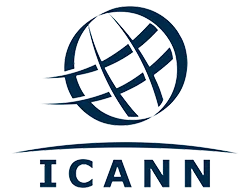ICANN Acronyms and Terms
S
script
A collection of symbols used for writing a language. There are three basic kinds of scripts. One is the alphabetic (e.g., Arabic, Cyrillic, Latin), with individual elements termed letters. A second is ideographic (e.g., Chinese), the elements of which are ideographs. The third is termed a syllabary (e.g., Hangul), with individual elements representing syllables. In order to be used in a computing environment, each element of a script needs to be numerically encoded.
script table
A set of rules that govern which code points are permissible to represent a particular script in the domain name system. Contemporarily known as a label generation ruleset.
second-level domain(SLD)
A label that is found in a zone that is under a top-level domain. In example.com, the second-level domain is example.
Second-Level Label Generation Rules Reference(Second-Level LGR Reference)
A set of Label Generation Rules for a particular language or script, which has been reviewed for linguistic, security, and stability considerations and formally published as a reference for second-level domain names.
Second-Level LGR References are made available on the ICANN website. Top-level domains can adopt these LGRs as is or use them as the basis for further modifications.
second-level name
A domain name that has been registered in a top-level domain. For example, in the icann.org domain name, icann is the second-level name and icann.org is the full name.
secondary market
When used in reference to the Domain Name System, the buying and selling of domains names that have already been registered and are available for sale by their current owners.
security
Security and Stability Advisory Committee(SSAC)
One of four Advisory Committees in the ICANN community. The SSAC advises the ICANN Board and the ICANN community on issues relating to the security and integrity of the Internet's naming and address allocation systems. Besides providing guidance on security matters during policy development, the SSAC monitors the Internet's naming and address allocation system for threats.
Security, Stability, and Resiliency(SSR)
Essential elements of ICANN’s commitment to enhance the operational stability, reliability, resiliency, security, and global interoperability of the Internet identifiers that ICANN coordinates.
ICANN’s FY15-16 Identifier Systems Security, Stability and Resiliency Framework defines the SSR elements as:
- Security – the capacity to protect Internet Identifier Systems and prevent misuse.
- Stability – the capacity to ensure that Internet Identifier Systems operate as expected, and that users of these systems have confidence that the systems operate as expected or intended.
- Resiliency – the capacity of Internet Identifier Systems to effectively withstand, tolerate, or survive malicious attacks and other disruptive events without interruption or cessation of service.
Security, Stability, and Resiliency of the Domain Name System (DNS) Review(SSR Review)
A periodic review required by the ICANN Bylaws to assess ICANN’s execution of its commitment to enhance the operational stability, reliability, resiliency, security, and global interoperability of the Internet’s system of unique identifiers.
Section 4.6 in the ICANN Bylaws provides details about performing an SSR Review. Reports from past reviews are available on the ICANN website, along with progress updates for any SSR Reviews that are underway.
slot request
In the New Generic Top-Level Domain Program (New gTLD Program), a step within the application submission period in which the applicant submits a deposit for each requested slot in the Top-Level Domain (TLD) Application System. One slot is designated per application.
social engineering
A technique in which attackers attempt to exploit people’s natural inclinations to trust others and be helpful. For example, in a phishing scheme, attackers exploit their victims’ sense of trust using emails that appear to be from trusted person (e.g., a friend, family member, or coworker) or entity (e.g., a bank, reputable e-commerce site, or credit card company).
Social engineers also exploit other human inclinations such as curiosity, vanity, fear, or greed. Although social engineering often plays a role in cybercrime, the technique is frequently used in other types of crime.
spam
Unsolicited bulk email, where the recipient has not granted permission for the message to be sent, and where the message was sent as part of a larger collection of messages, all having substantively identical content.
Special Interest Forums on Technology(SIFT)
A platform for the ICANN community to discuss emerging technologies and trends related to the Internet's identifier systems.
Specific Reviews
Periodic reviews required by the ICANN Bylaws to assess and report on ICANN’s performance in key areas. These reviews provide a mechanism to assess and report on ICANN's progress toward fundamental organizational objectives. The Bylaws require four Specific Reviews:
- Accountability and Transparency Review
- Security, Stability, and Resiliency of the Domain Name System (DNS) Review
- Competition, Consumer Trust, and Consumer Choice Review
- Registration Directory Service Review
Community-led review teams conduct these reviews as described in Section 4.6 of the ICANN Bylaws. Reports from past reviews are available on the ICANN website, along with progress updates for any Specific Reviews that are underway.
The Specific Reviews were formerly known as the Affirmation of Commitments (AoC) Reviews.
stability
stakeholder
Within ICANN, any individual or entity that is directly or indirectly affected by the decisions or actions of the ICANN community, organization, or Board. ICANN stakeholders include registry operators, registrars, Internet service providers, businesses, civil society, Internet users, governments, research institutions, technical experts, and nongovernmental organizations.
stakeholder group
A formally recognized body within the Generic Names Supporting Organization (GNSO) that represents a specific segment of the GNSO community. Stakeholder groups are specified in the ICANN Bylaws and hold designated seats on the GNSO Council. The GNSO has four stakeholder groups:
- Registry Stakeholder Group (RySG)
- Registrar Stakeholder Group (RrSG)
- Commercial Stakeholder Group (CSG)
- Non-Commercial Stakeholder Group (NCSG)
Some stakeholder groups are further divided into constituencies. A constituency represents a segment of a stakeholder group’s community.
standard application
In the New Generic Top-Level Domain Program (New gTLD Program), an application that has not been designated by the applicant as community-based.

